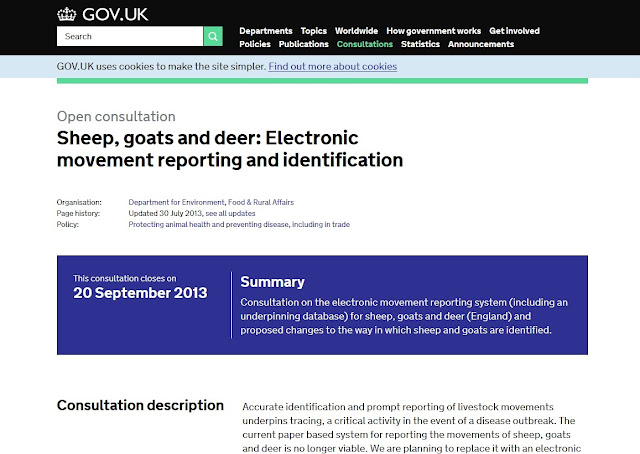mardi 6 août 2013
Under The Skin....EID
Dont you just love the way these types of consultations are brought in as quietly as possible, hopefully no one will notice. Fortunately someone did and I for one am very pleased that this issue has yet to go away.
There has already been a dispensation granted for some parcs here in France who maintain ornamental flocks of sheep on view to the public to dispense with plastic ear tags in favour of subcutaneous microchips as was announced in the most recent GEMO bulletin. Thank goodness some advocacy exists out there for breeders who are not satisfied with the current one cap fits all approach. Its a shame that the option to microchip was not investigated more throughly at an earlier stage. I look foward to future announcements. LINK to the site page and consultation paper for the UK.
Puce électronique sous-cutanée bien tôt pour moutons non-destiné pour la consomption? Qui sait.... à voir.
The Ouessant Sheep originates from the island of Ouessant, part of a tiny archipelago just off the north coast of Finistere, Brittany. The island of terror as it was known to some, was swept by the full force of the atlantic’s weather, the hardy sheep adapted to survive on poor grazing from salty clifftop meadows. It was the women of the island that raised the sheep, renowned for their black wool to weave into cloth known locally as berlinge and their meat with its sweet and delicate taste.
La race "Mouton d'Ouessant" est originaire de l’île d’’Ouessant qui fait parti d’un petit archipel au large du Finistère, Bretagne. L’île de l'épouvante comme c'était connu par certains était balayé par les intempéries de l’atlantique, ces moutons rustiques s'adaptaient à survivre sur les pâturages pauvres des falaises salées. C’était les femmes de l’île qui élevaient les moutons réputés pour leur laine noire à tisser « la berlinge » une étoffe régionale et leur viande avec un goût doux et délicat.


Aucun commentaire:
Enregistrer un commentaire